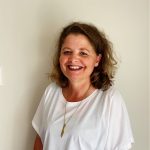Streamlining patient pathways
“The dashboards provide live information that informs decision making at an operational level. Like an airplane, we’re not flying blind.”
John Cartwright, General Manager Emergency Department and Middlemore Central
By analysing large amounts of data to identify patterns, trends, and potential areas for improvement in the patient journey, users can manage and improve hospital efficiency and patient flow.
Data analytics can also be used to predict patient demand, allowing hospitals to better plan for staffing needs and resource allocation and prevent overcrowding and long wait times.
Middlemore Hospital is the largest in Aotearoa New Zealand and its Command Centre is
using a variety of live dashboards to manage patient flow.
An AI tool that forecasts surgical and medical admissions and discharges over the next seven days, helps staff to prepare and allocate resources.
Rosie Whittington, Te Whatu Ora Counties Manukau, Health Intelligence Manager, says “this supports users in their decision making, using real-time dashboards to plan for the future.”
Te Whatu Ora – Health New Zealand, Counties Manukau
Middlemore is the largest hospital operated by Te Whatu Ora – Health New Zealand. It offers secondary-level care and a selected range of community and domiciliary services for the population of Counties Manukau and niche specialist tertiary services for regional and national consumers in orthopaedic and plastic surgery, burns, spinal injury rehabilitation, renal dialysis, and neonatal intensive care.
At Middlemore Central Command Centre, various dashboards light up the screens.
The dashboards are key to the command centre’s role of managing patient flow in the busy hospital and are well used on wards, as well as displayed in the executive suite and incident management meeting room.
Users can see at a glance the overall hospital occupancy and a simple traffic light system provides an overview of performance.
Using this real time data, the Command Centre can coordinate and overcome obstacles to good patient flow, such as ensuring staff are where they need to be.
John Cartwright, General Manager Emergency Department and Middlemore Central, compares the Command Centre to the cockpit of an airplane.
“The dashboards provide live information that informs decision making at an operational level. Like an airplane, we’re not flying blind,” he says.
“We can see at a glance what is going on in the hospital rather than having to call all wards one by one. It is a game changer and allows us to function more efficiently.”
|
Kirstine Kent, Te Whatu |
|
Forecasting data enables planning
When a patient is admitted to the hospital, they need a bed in the correct location, attached to the relevant specialty, consultants and nurses, in order to get the specialised care necessary for recovery and discharge.
Live dashboards set the scene in the morning bed meetings, showing how many patients need a bed in what area and how many are expected to be discharged.
Rosie Whittington, Te Whatu Ora Counties Manukau Health Intelligence Manager, says that with finite resources it is better to understand what is coming through the front door. This enables clinical teams to prepare.
“We wanted to visualise the numbers of people coming in over the next week so that we can learn accordingly and predict impact on non-scheduled care,” she says.
“Data was available for long term planning, but we needed data in the short term for hourly and daily forecasting.”
They embarked on a project to forecast surgical and medical admissions and discharges over the next seven days, using AI platform Data Robot.
An algorithm was trained on historical hospital data, to find patterns in what has happened on certain days and weeks, and even hours of the day, in order to forecast the future.
It now pulls occupancy data in real time from the Patient Administration System and uses this to forecast admissions and discharges.
Dashboards visualise this data so managers can see actual demand, historical demand and predicted demand.
“This supports users in their decision making, using real time dashboards to plan for the future,”Whittington says.
“The algorithm is always learning because of the process we have built around it to retrain when it drifts, and we are always checking how the model performed compared to what actually happened.”
|
Rosie Whittington, Te Whatu |
|
Informing the future
Forecasting data allows the Command Centre to be more responsive to staffing and resource needs on the ground.
Cartwright sends morning emails, highlighting key priorities and what they are anticipating through the doors.
This allows staff to take preliminary action, such as review their rosters, use satellite hospital capacity or consider the virtual care option, Hospital in the Home.
“It allows services to plan and move things around if needed,” explains Cartwright.
“For example if we are expecting lots of vascular surgery patients they will need ICU capacity and a certain number of minutes of acute theatre time, but they can’t start surgery until an ICU bed is available,” he explains.
“It makes a real impact as sometimes the algorithm has forecast a bad day, but we did some escalation that encouraged more discharges and were able to cope with the demand.
“We wouldn’t be able to do that without really easy access to good information and the staff trusting the data,” he says.
|
Joan Lau, Te Whatu Ora |
|
Empowering and adding value
Joan Lau,TeWhatu Ora Counties Manukau Advanced Analytics Manager, says everyone in the organisation sees the same information, from a nurse working on the floor up to a general manager.
She describes how in the past, “analytics was something we had to do for reporting”.
“It wasn’t adding value, but we realised it’s really about empowerment and the arrival of Covid-19 really showed how powerful that can be,” she says.
Use of data during the pandemic response elevated awareness and understanding of the power of data, from the coalface all the way up to executive levels of the health system.
Kirstine Kent, Service Manager at Te Whatu Ora Counties Manukau, describes how the hospital has spent a lot of time developing its dashboards, which are “tailor made for us and how we work and how we think”.
“Without these dashboards, we would have to send people out to do manual counts. Instead, we have this repository in the middle of the hospital with all the information we need about all specialties in real time and at the same time,” Kent says.
“I can see how many patients are in all our seven location sites; I know how busy the birthing units and our mental health facilities are, and I even know how the hospital is feeling in terms of the staff on the wards,” she says.
“This information just wasn’t available in the past, and now it’s all right here on our screens and at our fingertips.”
|
John Cartwright, General |
|



